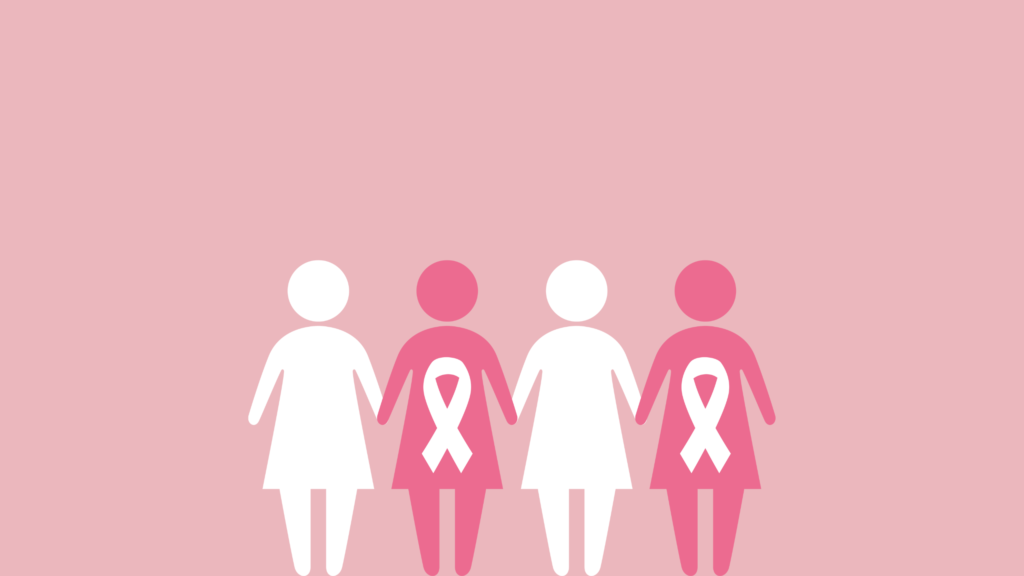Breast cancer is the most commonly diagnosed cancer in women. One in eight women in the United States will be diagnosed with breast cancer in her lifetime. However, early detection momentously improves your chances of successful treatment.
There are over 2.8 million breast cancer survivors are alive in the United States today. Ashkenazi Jewish women are at a higher risk for breast cancer. Unfortunately, I have many young female friends that have been diagnosed with breast cancer. Fortunately for the time we live in today, most of them are survivors.
Tips for Breast Health Awareness
Early detection greatly improves your chances of successful treatment.
Self-Exams—Do it every month
Regular self-exams will help you to be familiar with how your breasts look and feel so you can alert your doctor if there are any changes. The best time to do self-exams is during your monthly cycle.
Thermal Imaging
Thermography, also called thermal imaging, uses a special camera to measure the temperature of the skin on the breast’s surface. Doctors can also perform full-body imaging scans using thermography to predict if any areas of the body show signs of abnormality or inflammation. No study has shown that it’s a good screening tool to detect breast cancer early when the cancer is most treatable. The American Cancer Society (ACS) does not recommend thermography as a replacement for mammograms.
Breast MRI (Magnetic Resonance Imaging)
Recommended for screening women who are at high risk for breast cancer, usually due to a strong family history and/or a mutation in genes such as BRCA1 or BRCA2. It’s not recommended as a routine screening tool for all women. If you are considered high-risk, you would have breast MRI in addition to your annual mammograms (X-rays of the breast).
Breast MRI screenings result in more false positives — the test finds something that initially looks suspicious but turns out not to be cancer. If breast MRI were used as a screening tool for everyone, many women would end up having unnecessary biopsies and tests, not to mention the anxiety and emotional distress.
The American Cancer Society (ACS) recommends that all high-risk women — those with a greater than 20% lifetime risk of breast cancer — have a breast MRI and a mammogram every year.
Mammograms
Mammograms don’t prevent breast cancer, but they can save lives by finding breast cancer as early as possible. A mammogram is an x-ray of the breast tissue and can often show a breast lump before it can be felt. If you are 38 and are planning on getting pregnant soon, it is best to get your mammogram before you get pregnant. Make sure to get your mammograms done annually from age 40 on, unless there is a family history of this.
3-D mammography (also called digital breast tomosynthesis, digital tomosynthesis, or just tomosynthesis) creates a three-dimensional picture of the breast using X-rays. Several low-dose images from different angles around the breast are used to create the 3-D picture. Several studies have found that 3-D mammograms find more cancers than traditional 2-D mammograms and also reduce the number of false positives.
Some people are afraid to get a mammogram, because of the radiation. It is important to understand, a cell phone exposes us to more radiation than a mammogram once a year. Actually, the amount of radiation you are exposed to is equivalent to taking a trip on an airplane from LA to New York City.
I strongly believe that the benefits of getting your yearly mammogram far out way the risk. It can make the difference between life or death.
Healthy Habits
Living a healthy, active lifestyle can help you reduce your risk factors for breast cancer and other illnesses. Having a balanced, nutritious diet that is low in sugar helps reduce your risk of developing breast cancer. A high-fat diet increases the risk because fat triggers estrogen production that can fuel tumor growth.
Early detection saves lives, monitor your breast health and don’t forget to get checked!




